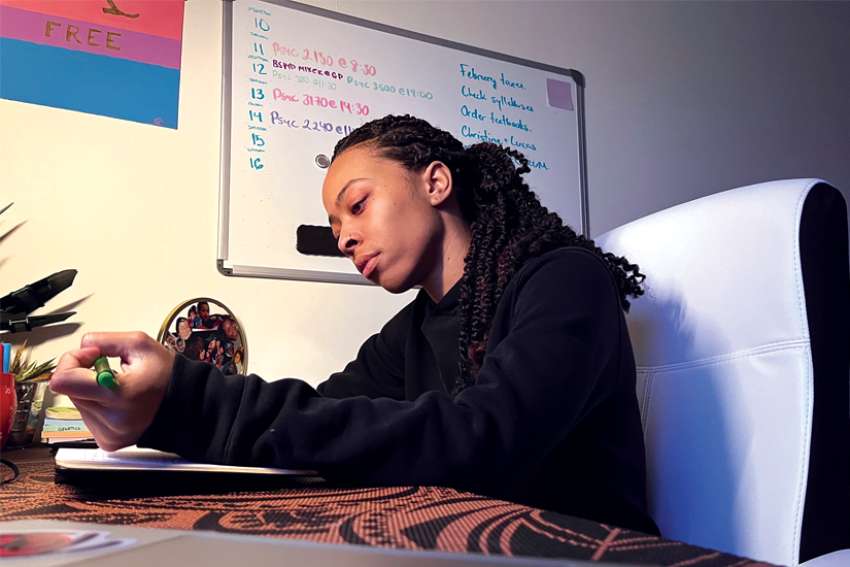While virtual learning is now a part of the normal experience for students, and will continue to play a role, says Carmen Mombourquette, what the past two years has made clear is that online learning is no substitute for kids being in the classroom.
“We have come to know clearly what children truly desire is that one-to-one direct human contact with their teacher,” said Mombourquette, board chair at Holy Spirit Catholic School Division in Alberta and education professor at the University of Lethbridge.
“That intimate human relationship and the bonds that form between teacher and student really heightened the understanding that indeed full online, full computer-based learning is not the way of the future. Human relationship continues to be the corner stone, the bedrock of what good education is all about.”
If COVID-19 is going to be with us for a while, school boards will need to look at ways to create a structure that is sustainable and healthy for everyone, he said.
Teachers have always managed a plethora of learning challenges every day due to the various learning needs of children, which has only been exasperated by the pandemic. Online learning, however, has given parents an unprecedented look into the challenging role and responsibility of teachers, and that has been a positive in some respects as parents gain an appreciation of teachers’ importance, said Mombourquette.
“Maybe we’re moving a little away from society questioning almost every aspect of authority figures to suddenly realizing, my goodness they know what they’re doing and they’re making a difference,” he said. “I want my children back in that environment full time.”
Tierra Escoffery, a second-year psychology student at Toronto’s York University and big sister to six younger siblings in Ontario’s Catholic system, has been helping to fill in the gaps in their learning caused by the ups and downs of COVID-19. She’s been teaching her siblings focus techniques to maintain engagement and content retention, goal setting and other strategies in the midst of managing her own learning. Curriculum overall has been “watered down” with e-learning, she says, leaving many students ill-prepared for the return to school after lockdowns.
With many parents feeling anxious about how their children’s education might have been compromised during the pandemic, Escoffery has extended her learning support services to parents needing more mental, emotional and tutoring support for their kids.
“This is the first time that people have had to spend this much time with their kids or their significant others or their families and it can be a little bit overwhelming,” said Escoffery. “I can understand it and empathize with that. I just wanted to help those families out.”
In addition to the structural changes to modes of learning, the pandemic gave prominence to the glaring inequities of race, disability and income. The Toronto Catholic District School Board alone distributed 20,000 devices to help bridge the technology gap, said trustee Markus de Domenico. But even in cases where families do have devices and Internet, it might not be fast enough to support several kids plus parents, all juggling Zoom calls, e-learning modules and streaming.
Magnification of the income gap, de Domenico says, brought attention to the need for equity in the education system.
“COVID has really changed the game,” said de Domenico. “In terms of equity we see the difference in income levels of students. Some schools can raise a lot of money to add technology or to do different things, and some schools absolutely cannot. So how do we react to that as a board? Are there other issues of ethnicity, racial issues that come into it? It’s certainly given us the opportunity, which we’ve seized upon, to see issues that may not have been so prevalent before COVID.”
During these past two years, there has also been a global reckoning on anti-Black racism as well as a strong push toward Indigenous reconciliation following the discovery of unmarked graves at former residential schools. These issues, on top of the disrupted system, have made their way into the classroom as well and teachers have embraced pushing for change, said Mombourquette.
With a heightened focus on mental health, one of the greatest changes to curriculum has perhaps been a greater focus on student wellness. Physical education programming now includes mental wellness curriculum.


